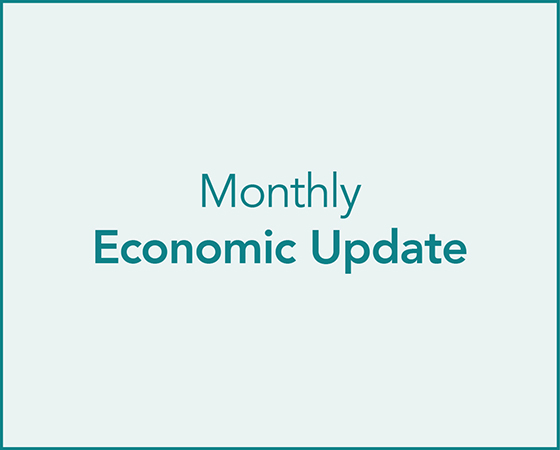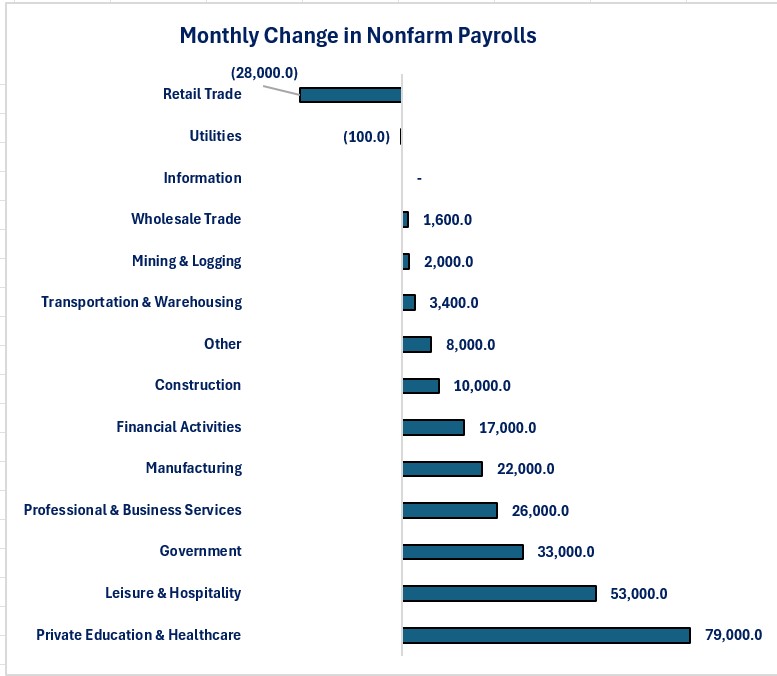Soundbite.
The November Employment Situation report showed mixed results as job creation grew but the number of people employed fell.
-
Jobs increased 227,00 and revisions to the previous two months added another 56,000 jobs.
-
The number of people employed fell by 355,000 and the Labor Force Participation Rate fell from 62.6% to 62.5%.
-
The unemployment rate rose from 4.1% to 4.2%
November's results will not change the Federal Reserve's strategy towards interest rates. The Federal Reserve is still expected to lower its overnight borrowing rate by another 0.25%.
Establishment survey.
-
The Private Education & Healthcare sector led the way with the strongest jobs growth.
-
The Retail Sales and Utilities sectors lost jobs.
-
-
Growth in jobs remains concentrated in a few industries.
-
The top three industry sectors accounted for 73% of total jobs growth
-
-
On a growth basis, the Private Education & Healthcare, Leisure & Hospitality and Mining & Logging sectors had the strongest growth rates and Retail Sales had the weakest.
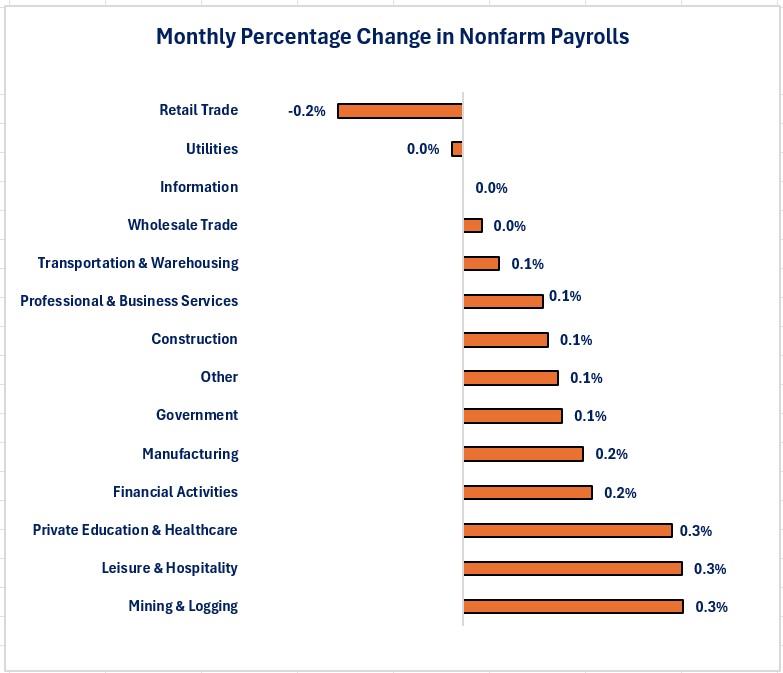
-
The Information sector experienced the strongest year-over-year growth in average monthly earnings while Transportation & Warehousing experienced the weakest growth.
-
On a dollar basis, the Information sector also saw the strongest year-over-year dollar growth but, Retail Sales experienced the weakest dollar growth.
-
The difference in dollar growth between the strongest and weakest industry sectors was $94.34 per month.
-
The Information sectors dollar growth was 6.8 times more than the Retail sector.
-
This is another illustration of the different experiences different workers may be having when it comes to financial stress.
-
It is far harder to deal with increases in prices when your monthly wage increased by $16.11 per month compared to someone who experienced a $110.45 monthly increase.
-
-
-
Hourly employees saw a slight additional increase in wages as the average work week increased from 34.2 hour to 34.3 hours.
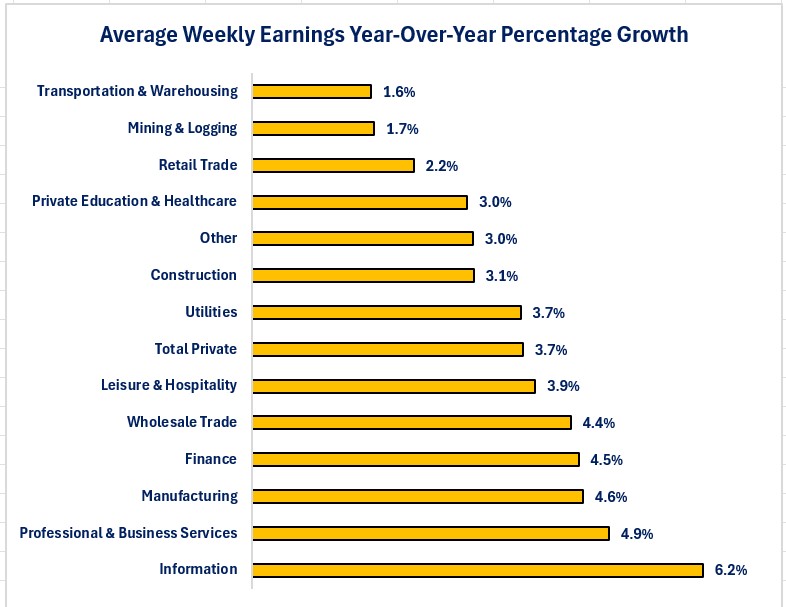
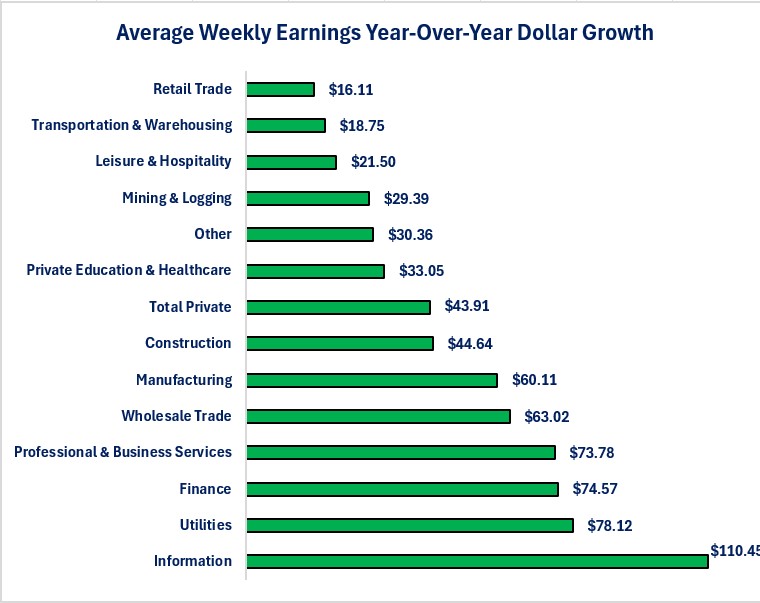
Household survey.
-
Examining employment by level of education showed that all levels of education, except those with less than a high school diploma fell and those with a Bachelor's degree or higher experienced the biggest loss of employment.

-
It may seem odd that two categories that experienced losses in employment showed declines in unemployment. This is because, unless someone who lost a job was actively seeking another job, they would not be counted as unemployed.
-
The reduction in unemployment levels for two of the education categories indicates that people in these categories dropped out of the labor force.
-
The number of people not in the labor force increased by 368,000. This is a combination of people who lost jobs in November but did not actively seek new jobs yet and people who have been looking for employment and have stopped looking.
-
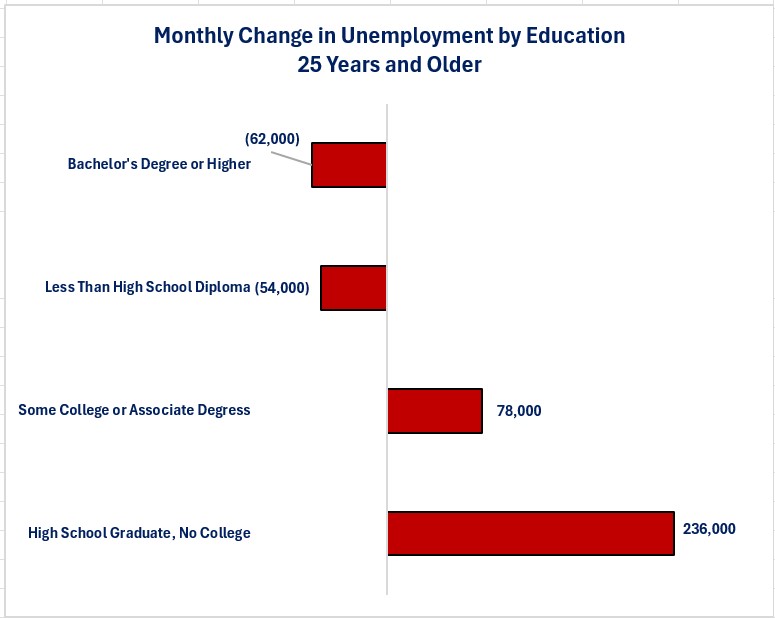
-
The unemployment rate rose from 4.1% to 4.2%
-
The Labor Force Participation Rate fell from 62.6% to 62.5%
-
The number of people working multiple jobs rose by 275,000
-
The average duration of unemployment rose from 22.9 weeks to 23.7 weeks.
-
The percentage of people who have been unemployed 27 weeks or more rose from 22.9% to 23.2%.
Conclusions.
- The rebound in jobs growth in November reflected some of the unwinding of the distortions from October's report.
-
Remember, October's report was distorted by the hurricanes and Boeing strike.
-
-
Averaging October and November's jobs creation gives us an average of 132,000 jobs per month.
-
This is a slowing from the rest of the year but still positive.
-
-
The data continues to show signs of stress beneath the headlines.
-
The continued rise in number of people working multiple jobs needs to be monitored.
-
-
November's Employment Situation report does not change the Federal Reserve's strategy for interest rates.
-
Forecasts are still for a 0.25% reduction at this month's Federal Reserve policy meeting.
-

Steve is the Economist for Washington Trust Bank and holds a Chartered Financial Analyst® designation with over 40 years of economic and financial markets experience.
Throughout the Pacific Northwest, Steve is a well-known speaker on the economic conditions and the world financial markets. He also actively participates on committees within the bank to help design strategies and policies related to bank-owned investments.




